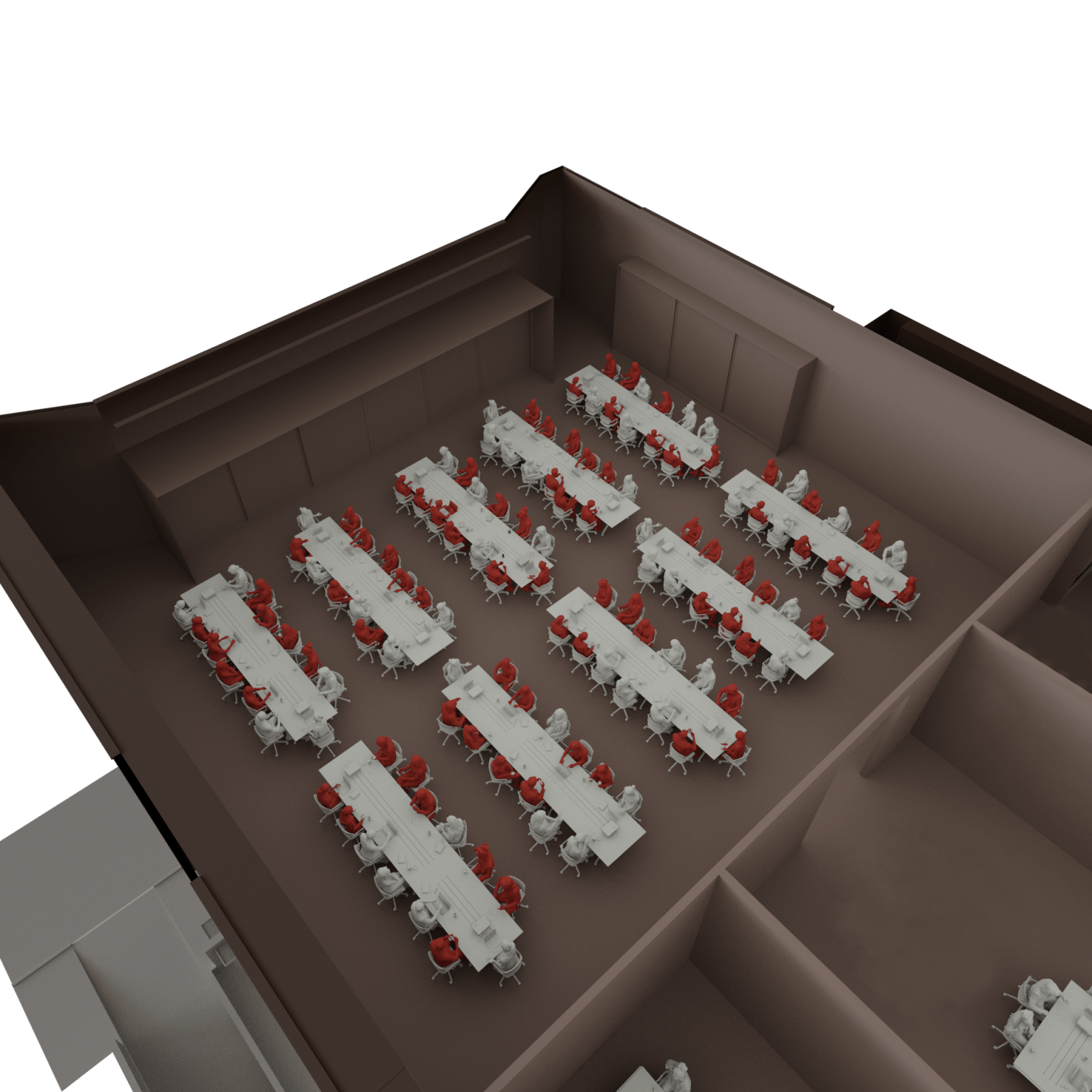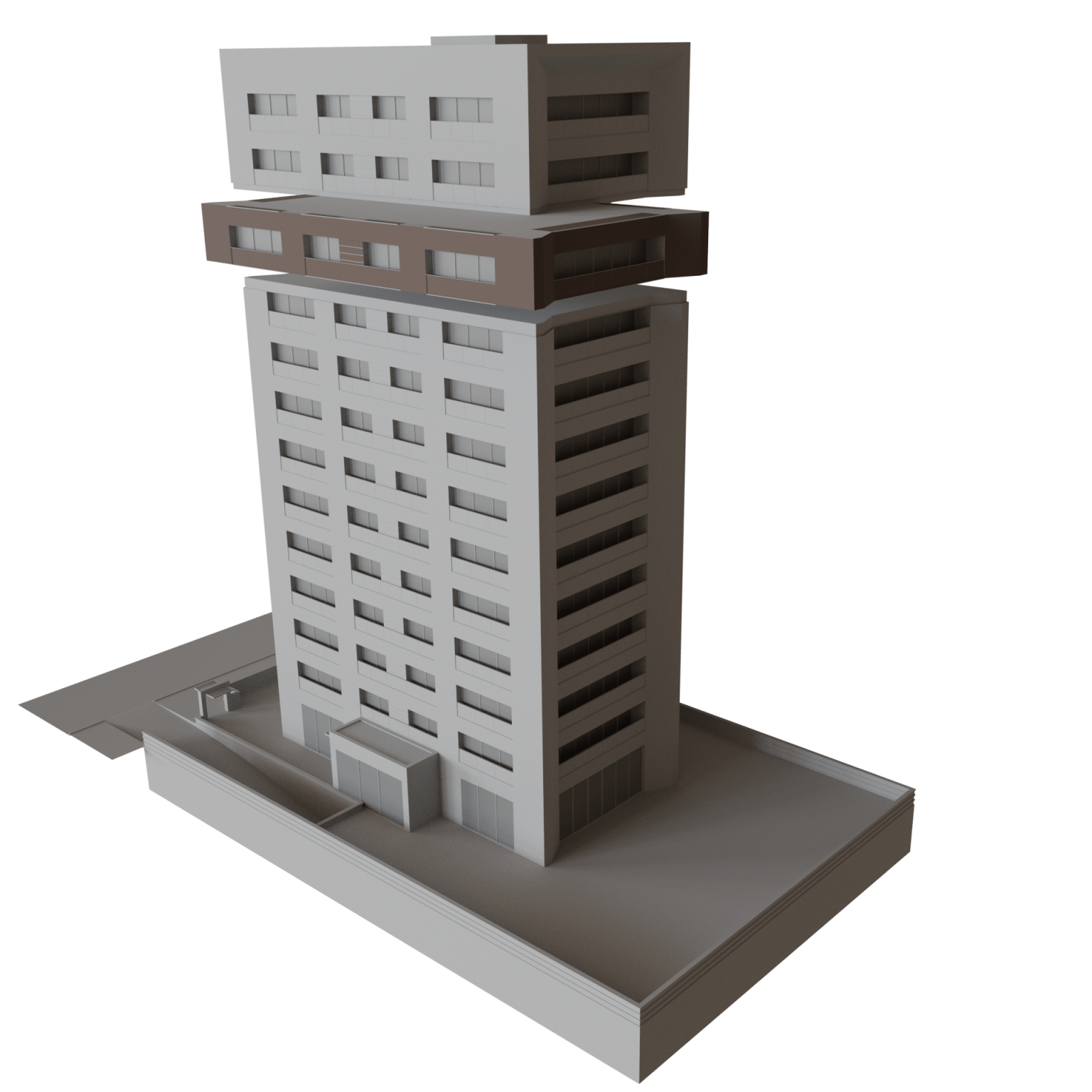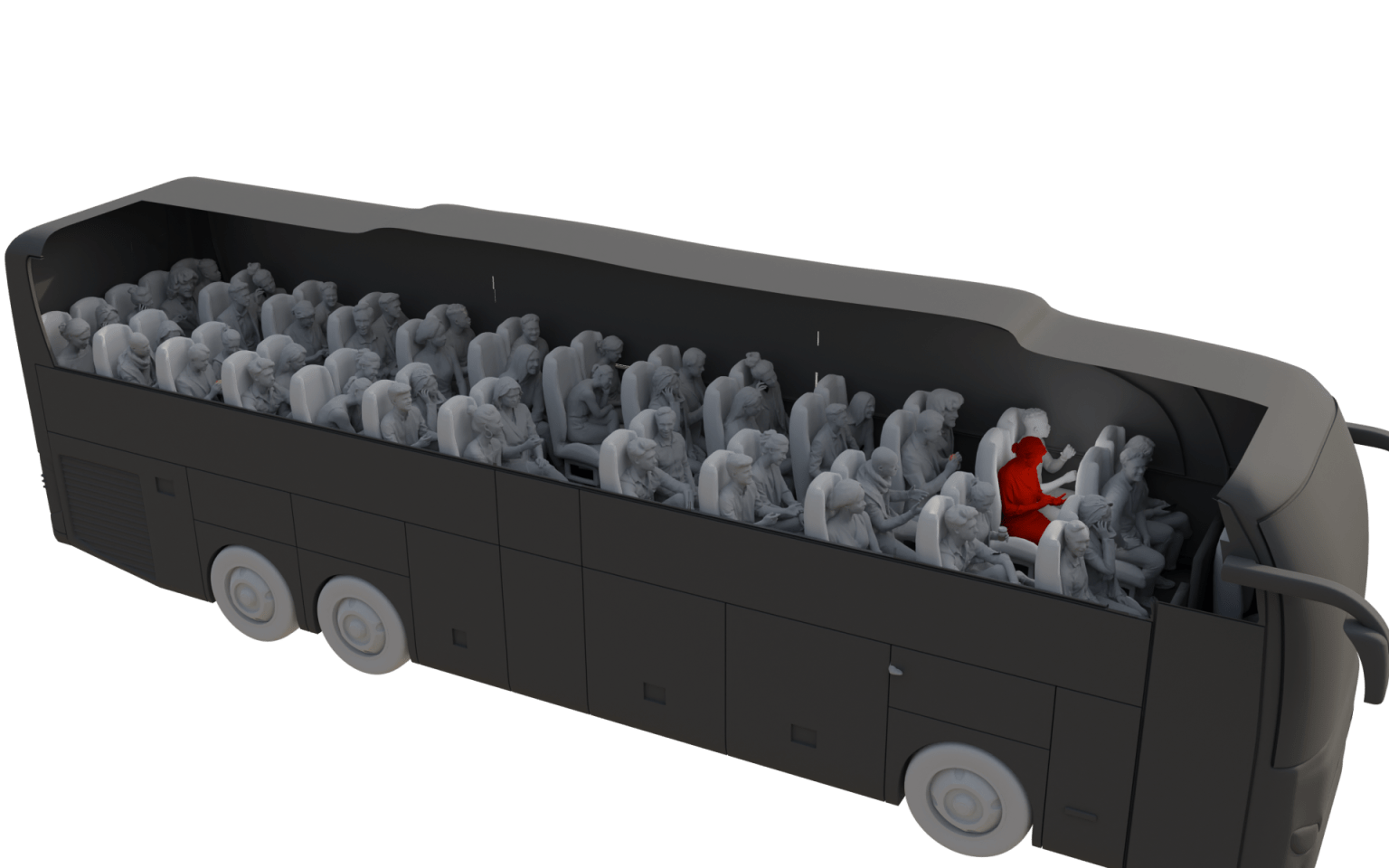Over a year has passed since we started hearing the word Corona associated with words like outbreaks and virus for the first time. And what a year we’re leaving behinds us. It has been characterised by negative news, and emotions that have been going back and forth between hope and dispair.
But we can also see that when something feels relevant enough, close to ourselves, and at the same time urgent, we are capable of great and rapid change. And we can learn so much about minimising virus spread from the past year with Corona.
Three real Corona outbreaks to learn from
The vaccine is here and we can all start seeing light in the tunnel. But we need to hang in there some time still, before the sigh of relief. At the innovation hub we think it’s important to keep learning, stay informed, and to share our insights. That’s why we have chosen to share parts of an analysis published in the digital version of El País1, Spain’s most read newspaper.
We’re going to take a closer look at three different every day situations, and at the same time remind about the importance of viral control measures. Click on the links below to get to the different case presentations.
Measures to minimize virus spread
What these three Corona outbreaks have in common is that the risk of infection is highest in indoor spaces. In any setting in which people are together for a long period of time, these measures should be taken, prioritising those that are most effective at protecting us from the risk of infection:

Physical distance of 2 meters.

Use face masks in environments where crowds may occur. Using a face mask can have a positive effect on preventing infected people from spreading the infection via exhaled air.

Avoid background noise and -music so people don’t have to get to close and raise their voice and expel more droplets as they speak.

In workplaces, restaurants or other similar indoor environments, increase the distance between furniture and ensure that people keep their distance. Avoid large gatherings of employees such as meetings, cafeteria, locker rooms, etc.

If employees are to sit together, make sure that the workplaces are designed in a zig-zag pattern with at least 2 meters in between.

Open windows to let in fresh air, even if it makes people feel uncomfortably hot or cold. If there is a ventilation system, make sure that the ventilation is on. WHO, ECDC and others recommend that ventilation be started two hours before and two hours after the working day for pollutants and infectious agents to be ventilated out. If you have ventilation, always use air filters and clean them regularly.

Avoid recirculation of the air.

Maintain good hand hygiene.
If you want to deep dive in each case, click on the links above. You can also read more about Corona, spread of infection, virus and particles i andra inlägg på vår blogg.
And if you think we missed something or got something wrong we are always happy to get feedback. Get in touch so we can have a digital Swedish fika! 😊
Sources:
- El País, https://english.elpais.com/society/2020-10-28/a-room-a-bar-and-a-class-how-the-coronavirus-is-spread-through-the-air.html, https://english.elpais.com/spanish_news/2020-06-17/an-analysis-of-three-covid-19-outbreaks-how-they-happened-and-how-they-can-be-avoided.html, Authors: Javier Salas (javier@esmateria.com), Mariano Zafra
- US Centers for Disease Control and Prevention, Centers for Disease Control and Prevention in Guangzhou and Hangzhou, The Johns Hopkins Center for Health Security, the Spanish National Research Council’s Institute of Environmental Assessment and Water Studies (IDAEA-CSIC), European Centre for Disease Prevention and Control, International Laboratory for Air Quality & Health (WHO, Queensland), and the government of South Korea.
Office in Seoul, South Korea
Outbreak at an office


Following an outbreak of Covid-19 in an office in Seoul, South Korea, authorities initiated a research team to analyze the outbreak and learn more about the causes of the spread of the infection. The conclusion about the outbreak in this 19-storey office building showed that the risk of infection had increased manifold due to four key factors:
- Closeness
- Long-term contact
- Many people
- Enclosed space
Let’s take a closer look at the process

The outbreak was concentrated to one department. A call center on one of the floors. The staff in the department worked together in an open office landscape, where each table had 13 workplaces.

On some desks, such as this one, 9 of the 13 employees tested positive.

These employees were sitting inside an enclosed space with 137 workers.

Out of these 137 employees, 79 (57.6%) tested positive. The permanent contact within the same space over a prolonged period of time played a crucial role.

Far fewer of the other employees on this floor tested positive.

In the rest of the building, only 3 people tested positive out of 927 who underwent checks (0.3%) despite the fact they shared lobbies, elevators and other communal areas.
Conclusions of the research report
The research report carried out by local authorities showed that almost all the people who became infected in this 19-storey building (with more than a thousand office workers) were confined to the call center. In addition, the infected people worked almost exclusively in the same room. Despite the significant contact between employees from different floors of the building, the spread of the virus was largely limited to the only space filled with employees sitting at desks. This indicates that closeness was probably the main reason for the widespread spread.
How do we minimize the spread of infection in offices and workplaces
Recommendations from researchers and health experts aim to reduce the risk by avoiding larger collections of people. We need to reduce the concentration of people and also the exposure time, i.e. the time they spend together.
How it can be avoided
- switch to teleworking
- use facemasks
- don’t share material and equipment between co-workers
- keep staff distanced by
- avoid large meetings
- keep down the number of people at entrances / exits / elevators and in dining rooms / cafeterias
- organize workstations in a zig-zag pattern and maintain a distance of two meters between each
- make sure that the spaces are well ventilated and that the ventilation is kept running. WHO, ECDC and others recommend that ventilation is running two hours before and two hours after the working day for contaminants and infectious agents to be ventilated out
- avoid recirculation of air
- if the building doesn’t have a ventialtion system, open windows frequently for fresh air






Interested in further dialogue?
Sources
- El País, https://english.elpais.com/society/2020-10-28/a-room-a-bar-and-a-class-how-the-coronavirus-is-spread-through-the-air.html, https://english.elpais.com/spanish_news/2020-06-17/an-analysis-of-three-covid-19-outbreaks-how-they-happened-and-how-they-can-be-avoided.html, Authors: Javier Salas (javier@esmateria.com), Mariano Zafra
- US Centers for Disease Control and Prevention, Centers for Disease Control and Prevention in Guangzhou and Hangzhou, The Johns Hopkins Center for Health Security, the Spanish National Research Council’s Institute of Environmental Assessment and Water Studies (IDAEA-CSIC), European Centre for Disease Prevention and Control, International Laboratory for Air Quality & Health (WHO, Queensland), and the government of South Korea.
Restaurant in Guangzhou, China
Outbreak at a restaurant

The Restaurant, China
A New Year’s celebration in the Chinese city of Guangzhou provides the best example of how to reduce indoor risks. Two different studies concluded that poor ventilation can be a decisive risk factor if contact is maintained during prolonged periods.
Let’s take a closer look at the conditions

The restaurant was full the day of the celebrations. The outbreak happened in a room with no natural ventilation where around 90 people were eating with 8 waiters serving.

On table A, a person who had arrived the day before from Wuhan was eating with their family. That night, that person showed symptoms and went to hospital and tested positive for Covid-19.

After the meal, another 9 customers were diagnosed with Covid-19. All those infected from tables B and C were more than a meter away from Patient 0, some as far as 4.5 meters. No one else in the restaurant became infected.

Length of time is critical. The meals of families B and C overlapped with that of Patient 0 for an extended period, while those at table D only overlapped with Patient 0 for 18 minutes.

Researchers believe that the air conditioning played a crucial role. It meant the air was recirculating continuously between the three tables, concentrating the tiny, virally charged micro-droplets that Patient 0 was expelling into the atmosphere among these customers.
Conclusions from the studies
Cameras on the premises show that those infected had no contact in the washrooms or elsewhere that could have led to the transmission of the virus. Although close contact can play an important role in the transmission of SARS-CoV-2, transmission of the virus in small airborne droplets “in crowded, poorly ventilated rooms” is also possible, according to the scientists. Outdoor air vents in the restaurant were closed. “Our study suggests that it is vital to prevent overcrowding and provide good ventilation in buildings and public transportation to prevent the spread of SARS-CoV-2,” they add. The recommendations from the health authorities invariably insist on avoiding recirculating air, as well as holding activities outside whenever possible.
How do we minimize the spread of infection
- Avoid recirculation of the air.
- Make sure you have good ventilation. Open windows if possible.
- Always use air filters and clean them regularly
- Minimize the length of restaurant visits
- Avoid loud background music so that visitors do not have to raise their voices or sit close to hear each other.
- Reduce the size of parties indoors
- Increase the distance between people
- Arrange events outdoors if possible





Interested in further dialogue?
Sources
- El País, https://english.elpais.com/society/2020-10-28/a-room-a-bar-and-a-class-how-the-coronavirus-is-spread-through-the-air.html, https://english.elpais.com/spanish_news/2020-06-17/an-analysis-of-three-covid-19-outbreaks-how-they-happened-and-how-they-can-be-avoided.html, Authors: Javier Salas (javier@esmateria.com), Mariano Zafra.
- US Centers for Disease Control and Prevention, Centers for Disease Control and Prevention in Guangzhou and Hangzhou, The Johns Hopkins Center for Health Security, the Spanish National Research Council’s Institute of Environmental Assessment and Water Studies (IDAEA-CSIC), European Centre for Disease Prevention and Control, International Laboratory for Air Quality & Health (WHO, Queensland), and the government of South Korea.
Bus in Zhejiang, China
Outbreak on a bus

The bus, China
Chinese authorities and researchers from US universities have analyzed an outbreak of two buses that drove tourists to a Buddhist ceremony in Zhejiang, China.
Let’s take a closer look at the conditions

The passengers had travelled to the ceremony in two different buses. The vehicles were full, with scarcely 75 centimeters between rows. The journey took a total of 100 minuter – 50 minutes each way.

Patient 0, a 64-year-old woman, had been in contact with people from Wuhan. She had no symptoms until the following day.

In total, 23 people got infected on the bus. No one became ill on the other bus, despite the fact they were all mixing at the ceremony.

The air conditioning was on recirculation mode. The researchers believe that this was key; the passengers became infected regardless of their distance from Patient 0.
Conclusions
“Patient 0 in this outbreak appears to have been a superspreader,” explains Emily Gurley, an epidemiologist at Johns Hopkins University. “As at the restaurant, transmission could be explained by aerosols and droplets traveling longer distances due to the draft from the window or the air conditioning,” she adds.
A number of studies in Japan and elsewhere show that public transportation is not responsible for multiple infections as long as users maintain the rules of hygiene and protection. Especially the use of masks that prevent infected individuals from releasing contagious droplets into the atmosphere, as happened with patient 0 on the bus. It is also suggested that specific protection measures be introduced for drivers of public transportation, as well as improving ventilation and increasing the regularity of buses and trains in order to reduce crowding.
How can we minimise spread of infection in public transportation?
- Use face masks
- Improve ventilation
- Avoid recirculation of air
Increase regularity of buses and trains to reduce crowding



Interested in further dialogue?
Sources
- El País, https://english.elpais.com/society/2020-10-28/a-room-a-bar-and-a-class-how-the-coronavirus-is-spread-through-the-air.html, https://english.elpais.com/spanish_news/2020-06-17/an-analysis-of-three-covid-19-outbreaks-how-they-happened-and-how-they-can-be-avoided.html, Authors: Javier Salas (javier@esmateria.com), Mariano Zafra.
- US Centers for Disease Control and Prevention, Centers for Disease Control and Prevention in Guangzhou and Hangzhou, The Johns Hopkins Center for Health Security, the Spanish National Research Council’s Institute of Environmental Assessment and Water Studies (IDAEA-CSIC), European Centre for Disease Prevention and Control, International Laboratory for Air Quality & Health (WHO, Queensland), and the government of South Korea.




